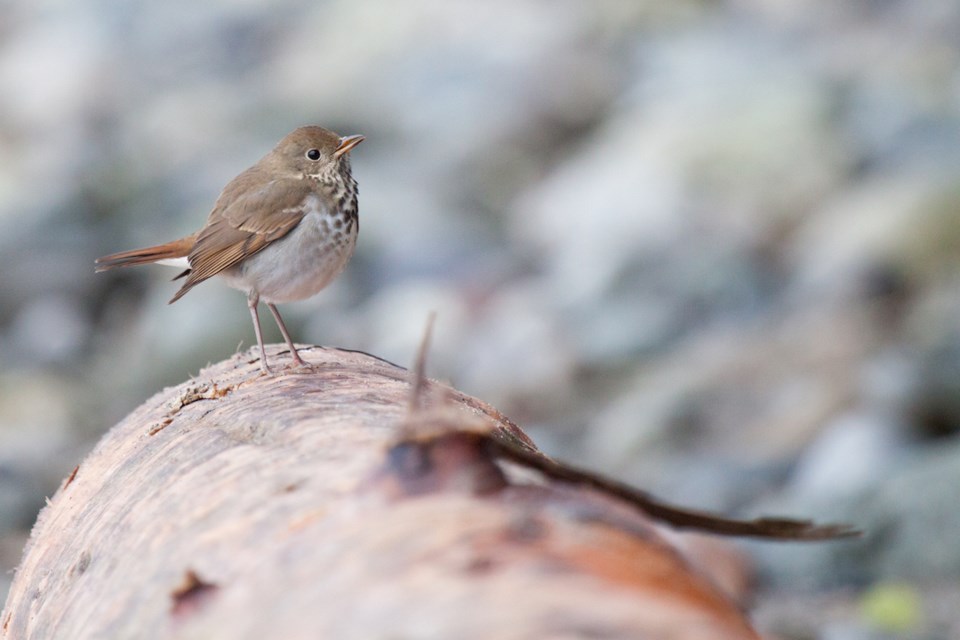The Sunshine Coast Natural History Society holds a year-round monthly bird walk/field trip for members, and the location of the outing on Sunday, June 12 was along the powerline right of way at the top of Pell Road in Roberts Creek. It may seem counter intuitive that naturalists would choose to spend their time seeking the wonders of the natural world along an industrial corridor such as a powerline. However, beneath the powerlines, BC Hydro is required to maintain the vegetation at the level of the many species of bushes as trees cannot be allowed to grow towards the lines. This scenario of a brushy corridor surrounded on both sides by second-growth forest is a perfect example of the biological concept known as “the edge effect.” This phenomenon is where two different ecotypes come together, in this case forest and a brushy, tree-free clearing, in an interface that supplies the benefits of both environments. The top of Pell Road is an excellent example of the above, but almost any stretch of the powerline is good, some even more so if there is a wetland present.
In light of the comments above, it is incumbent on BC Hydro to avoid negative impacts on these corridors, for example, by cutting maple coppices during the bird nesting season, and also avoiding the use of herbicides. Hydro’s policy towards the presence of scotch broom also bears scrutiny as this is an invasive species that crowds out native vegetation and is also a fire hazard.
The SCNHS field trip, led by John Hodges, was attended by about 25 naturalists and identified 30 species of birds either visually or by their vocalizations. Most species were passerines, or songbirds, but bald eagles and turkey vultures were also observed flying overhead and other bird groups were recorded such as woodpeckers (three species) and rufous hummingbird. Most of the species recorded were insectivores, frugivores and seed-eaters taking advantage of the diverse vegetation and cover provided by the edge effect. Major bird families represented were the flycatchers (three species) and the wood warblers (seven species). The warblers are a very significant component of the summer birdlife of not only the Sunshine Coast, but our entire country.
Other species detected were warbling vireo, red-breasted nuthatch, Swainson’s thrush, cedar waxwing, purple finch, brown-headed cowbird, white-crowned sparrow, western tanager and black-headed grosbeak. Much of the detection of species was by vocalization and the loud song of the warbling vireo was heard for a large percentage of the walk. This is one of the commonest birds on the Sunshine Coast from May to September, but it is a small greenish bird hard to detect among the leaves, and most people are unaware of its presence except for its ubiquitous song. (As I write this one is endlessly singing on my property.)
Enjoy the birdsong while it lasts for by the time of my next column in two weeks (early July) the songsters will be winding down until next year.
To report your sightings or questions contact [email protected] or 885-5539. Good Birding.



